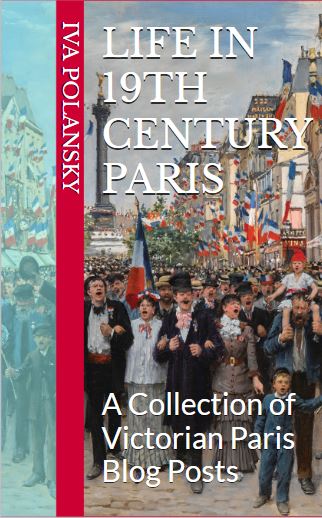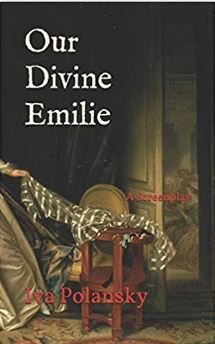.
I had another topic ready for the month of July when I came across the article THE RETURN OF PARISIANS TO THE CAPITAL IN JUNE 1871 translated below. The picture makes me uncomfortable, as does all war propaganda. Although the author of the article claims the painting is the perfect depiction of the situation and a mixture of tragedy and comedy, I beg to differ. No one in Paris laughed at the end of the greatest catastrophe the city suffered in its entire history. There was no place for comedy in June 1871 after Parisians returned to a city in ruins, permeated by the stench of death. The painter stayed anonymous for a reason. The picture is heavily biased toward the sacrifice of the Communards and portrays the bourgeoisie as pitiless villains.
In reality, no one had the guts to laugh. A truthful assessment of the situation comes from the pen of the novelist George Sand, already quoted in another article published in Victorian Paris The Bloodbath of the Paris Commune.
She wrote:
I come from Paris, and I do not know whom to speak to. I am suffocated. I am quite upset, or rather out of heart. The sight of the ruins is nothing compared to the great Parisian insanity. With very rare exceptions, everybody seemed to me only fit for the strait-jacket. One-half of the population longs to hang the other half, which returns the compliment. That is clearly to be read in the eyes of the passers-by.”
For years afterward, foreign visitors roamed Paris clutching printed guides to the ruins. Expeditions were organized to see the destroyed palace of Tuilleries, the gutted City Hall, the scorched Louvre, and other historical buildings set aflame by the Communards in the last days of the Commune called the Bloody Week. The massacres that followed beat by far the Terror years after the 1789 revolution. There was no specific guilty party in these tragic events of the Commune. No good guys against bad guys. The guilt spreads evenly over all actors. The Paris Commune is still a subject of enormous controversy in France, even one and a half-century later.
.
.
TRANSLATION:
Bertrand TILLIER, « Le retour des Parisiens dans la capitale en juin 1871 », Histoire par l’image [en ligne], consulté le 27/06/2022. URL : histoire-image.org/etudes/retour-parisiens-capitale-juin-1871
THE RETURN OF PARISIANS TO THE CAPITAL IN JUNE 1871
Publication date: March 2016
Author: Bertrand TILLIER
HISTORICAL CONTEXT
The return of Parisians to the capital in June 1871
After the “Bloody Week” and from the last days of May 1871, Parisians returned in large numbers to Paris, which they had generally left in two massive waves: some after the proclamation of the siege on September 19, 1870, others after the 18 March 1871. Most of them left for the greater suburbs or the provinces. Some have followed the wanderings of governments in Tours, Bordeaux and Versailles. Thus kept away from the capital, the Parisians experience the events through rumors and the press.
On their return, they discover the spectacle of a city in ruins, with rutted streets and burnt buildings, while Versailles repression continues its task.
IMAGE ANALYSIS
A synthetic work
This anonymous work is one of the few to depict the confrontation between the communards and their adversaries. But this table is above all a perfect summary of the situation in the first days of June 1871.
The artist located the scene in the middle of ruined buildings and at the foot of a gutted barricade guarded by a Versailles infantryman. On a section of the wall, official posters with the header of the Paris Commune are torn, as if to say again its crushing.
In this environment where destruction and violence reign, the artist distributes the roles to characters so stereotyped that they seem like actors: an elegant couple, a bourgeois and a priest moved by a common curiosity are assembled around the corpse of a federate with a shattered head. Using his cane – should we see an allusion to the military cudgel, an attribute of repression? –, the bourgeois examines the body of the communard, repugnant but fascinating.
The scene is essentially based on this parable-like confrontation.
INTERPRETATION
A tragic scene
The opposition between communards and Versailles presented in this work is based above all on the use of the most widespread social types in popular imagery and imagination: the priest, the bourgeois, the miserable…
Thanks to an applied touch, the painter likes to accentuate the contrasts between stereotyped characters, and more particularly between the fat bourgeois and the lean federated, whose respective constitutions are widely connoted: the fat possesses (power, money… ) which the lean lacks. Conversely, the thin is nervous, convulsive, and fragile: “qualities” all the more fatal as the fat who ignores them is the survivor and the winner.
The work is effective through the mixture of tragedy and comedy that permanently governs it, as if the artist could only subscribe to a usual derision in caricature, but intruded in painting, and without managing to renounce ambient violence. It is precisely in this ambiguity of intention – does the scene express sympathy for the Versaillese or for the Commune? – and in this procrastination of means that the work is the most impactful.
>
Related posts:
The Bloodbath of the Paris Commune
Where the Revolutionaries Lived by Mark Twain
.











An emotionally charged picture very well explained.
LikeLike
“Parisians returned in large numbers to Paris” – wait, weren’t the Communards Parisians too?
Thank you for this – not a part of history I know well. You’re always informative!
LikeLike
As the translation explains, many Parisians left Paris in two waves: one, to avoid the siege, the second, to avoid the Commune. There were enough inhabitants left, especially the poor, who could not afford to travel, to stage a revolution.
LikeLike
The picture is so unusual! Thanks for the explanation 🙂
LikeLiked by 1 person
Zitat “aus der Feder des Schriftstellers George Sand” Fehler: George Sand ist der Künstlername von „Amantine Aurore Lucile Dupin de Francueil“
Korrektur: aus der Feder der Schriftstellerin George Sand
LikeLike